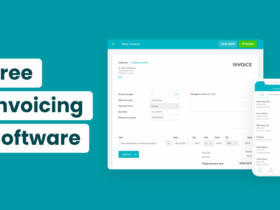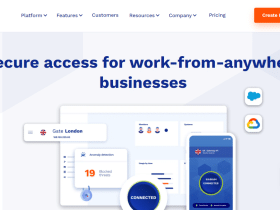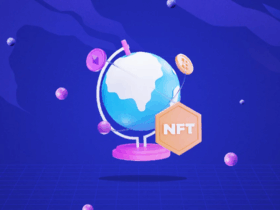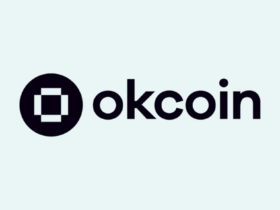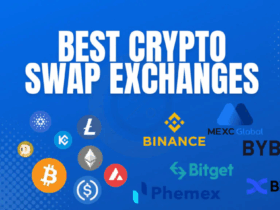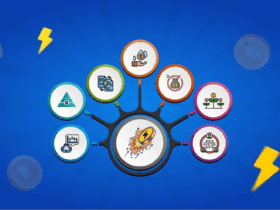What Is Crypto Airdrop?
A crypto airdrop is the release of free cryptocurrency tokens or coins to existing cryptocurrency holders. Blockchain projects or companies generally do this to promote their new coin, generate awareness, and maybe attract new users to their network. Airdrops are a common marketing method used to engage the crypto community and raise interest in a certain project.
The most prevalent sort of airdrop is this one. The blockchain project takes a “snapshot” of the blockchain at a given block height, and everyone who has the specified cryptocurrency in their wallet at the time of the airdrop is eligible to receive the tokens.
When a blockchain experiences a hard fork (a large upgrade that results in two different chains), original cryptocurrency holders may obtain airdropped tokens on the new forked chain. Some projects may reward long-term holders by issuing a part of their new tokens to people who have held the original token for a specified amount of time.
What Is AltLayer Airdrop?
AltLayer is a Rollup-as-a-Service (RaaS) platform for decentralized application developers to launch highly scalable application-tailored execution layers (aka Layer 2s). AltLayer can save significant capital and years of development work for application teams while encouraging innovation and rapid experimentation.
AltLayer has raised a total of $7.2M in funding from top investors like Polychain Capital and Balaji. They’ve confirmed to launch an own token in the future. Early users who’ve done the testnet actions and claimed their NFTs may become eligible for an airdrop when they launch their token.
Basic AltLayer Airdrop Points
| Basic | Details |
|---|---|
| Token Name | AltLayer Airdrop |
| Platform | Own chain |
| Support | 24/7 |
| Total value | N/A |
| KYC | KYC Is Not Requirement |
| Whitepaper | Click Here To View |
| Max. Participants | Unlimited |
| Collect Airdrop | Click Here To Collect Free Airdrop |
How To Claim AltLayer Airdrop Step-by-Step Guide:
- Visit the AltLayer testnet bridge page.
- Connect your wallet.
- Change the network to Sepolia.
- Now get testnet Sepolia ETH from here.
- Also claim MSEQ ERC-20 token from this faucet and mint MSNFT from here.
- Now go back to the testnet bridge page and deposit ETH from Sepolia to AltLayer testnet and vice versa.
- Deposit MSEQ ERC-20 token from Sepolia to AltLayer testnet and vice versa.
- Also deposit MSNFT from Sepolia to AltLayer testnet and vice versa by entering the token ID.
- They’ve confirmed to launch an own token in the future so early users who’ve done testnet actions may become eligible for an airdrop when they launch their token.
- Please note that there is no guarantee that they will do an airdrop. It’s only speculation.
How To Check AltLayer Airdrop Is Real Or Fake
Checking the legitimacy of a crypto airdrop can be a bit tricky, as scammers often use sophisticated techniques to create fraudulent airdrop campaigns that appear to be legitimate. Here are some steps you can take to verify the authenticity of a crypto airdrop:
- Official Sources: For information, always rely on official sources. Navigate to the project’s or cryptocurrency’s official website. Look for airdrop confirmation announcements, blog articles, or official social media channels.
- Whitepaper and Roadmap: Read the whitepaper and roadmap for the project. Legitimate initiatives typically have thorough documentation outlining their technologies, objectives, and ambitions. This might assist you in determining whether the airdrop is consistent with the overall strategy of the project.
- Social Media Verification : Check the project’s official social media accounts, such as Twitter, Facebook, and Telegram, for verification. Airdrop updates are frequently posted on legitimate projects’ official channels. Scammers frequently establish false accounts that seem close to the legitimate ones, so be wary of accounts with tiny differences in the name or username.
- Community Engagement : Check to see if the project has an active and engaged community. Legitimate projects frequently have genuine conversations, inquiries, and input from members of the community. Be skeptical if there is little or no actual engagement.
- Team Members: Conduct research on the project’s team members. A transparent and verifiable team is usually present in legitimate ventures. To authenticate their participation in the project, look for their LinkedIn accounts and other professional information.
- Domain Verification: Double-check the URL to ensure you’re on the genuine project website. Scammers frequently construct bogus websites with slightly altered URLs in order to deceive users.
- Private Key Requests: Proceed with great caution if the airdrop requests your private keys, recovery phrases, or sensitive personal information. This information is not requested by legitimate airdrops.
- Too Good to Be True: If an airdrop promise appears to be too good to be true, it most likely is. Scammers frequently entice victims with false benefits.
- In summary, it’s important to conduct thorough research, verify the source and instructions, look for feedback from other users, and trust your instincts when evaluating the legitimacy of a crypto airdrop. By taking these steps, you can minimize the risk of falling for a fraudulent airdrop and protect your assets and personal information.
What are the risks of participating in an airdrop?
Scammers can utilize airdrops to deceive users into providing their private keys, passwords, or other sensitive information. Always be on the lookout for phishing attempts and double-check the legitimacy of the airdrop and the entities behind it.
Participating in an airdrop may need the disclosure of personal information, such as your email or wallet address. This information may be misused or transferred to third parties without your permission.
AltLayer Airdrop Pros Or Cons
Pros of participating in an airdrop:
- User Engagement: Airdrops can bring new people to a project, enhancing its visibility and engagement. If people obtain free tokens, they may grow interested in the project.
- Distribution: Airdrops are a type of token distribution that can help ensure that tokens are distributed widely among potential users, supporters, or holders.
- Community Building: Because airdrops are frequently designed to reward existing token holders or participants in a project’s ecosystem, they can promote a sense of community among token holders.
- Marketing and Exposure: A well-executed airdrop can generate excitement and media coverage, raising the project’s profile and potentially attracting new funders and users.
- Network Effects: If the tokens that were airdropped have utility inside a certain ecosystem, this can encourage users to participate in the project and its platform.
Cons of participating in an airdrop:
- Dumping: Some airdrop participants may be only interested in selling the free tokens as soon as they receive them, thereby triggering a dramatic drop in token value quickly after the airdrop.
- Incentive Misalignment: Airdrops may not always attract people who are really interested in the project, as some may participate only for the free tokens and not contribute to the project’s growth.
- Resource-intensive: Planning and carrying out an airdrop can necessitate enormous resources in terms of time, money, and technical expertise.
- Regulatory Concerns: In some jurisdictions, airdrops might generate regulatory concerns, particularly if the tokens being given are considered securities or the airdrop method does not conform with local legislation.
- Lack of Engagement: While airdrops may generate early interest, they may not result in long-term engagement or acceptance of the project’s products or services.
AltLayer Airdrop Final Verdicts
The entire AltLayer stack is built with modularity in mind making it possible to end users to pick and choose for their rollups: a preferred run-time (such as EVM, WASM and others), a data availability layer (such as the underling L1 or data availability committee, Celestia, etc), a settlement layer (such as Ethereum, Arbitrum One).






